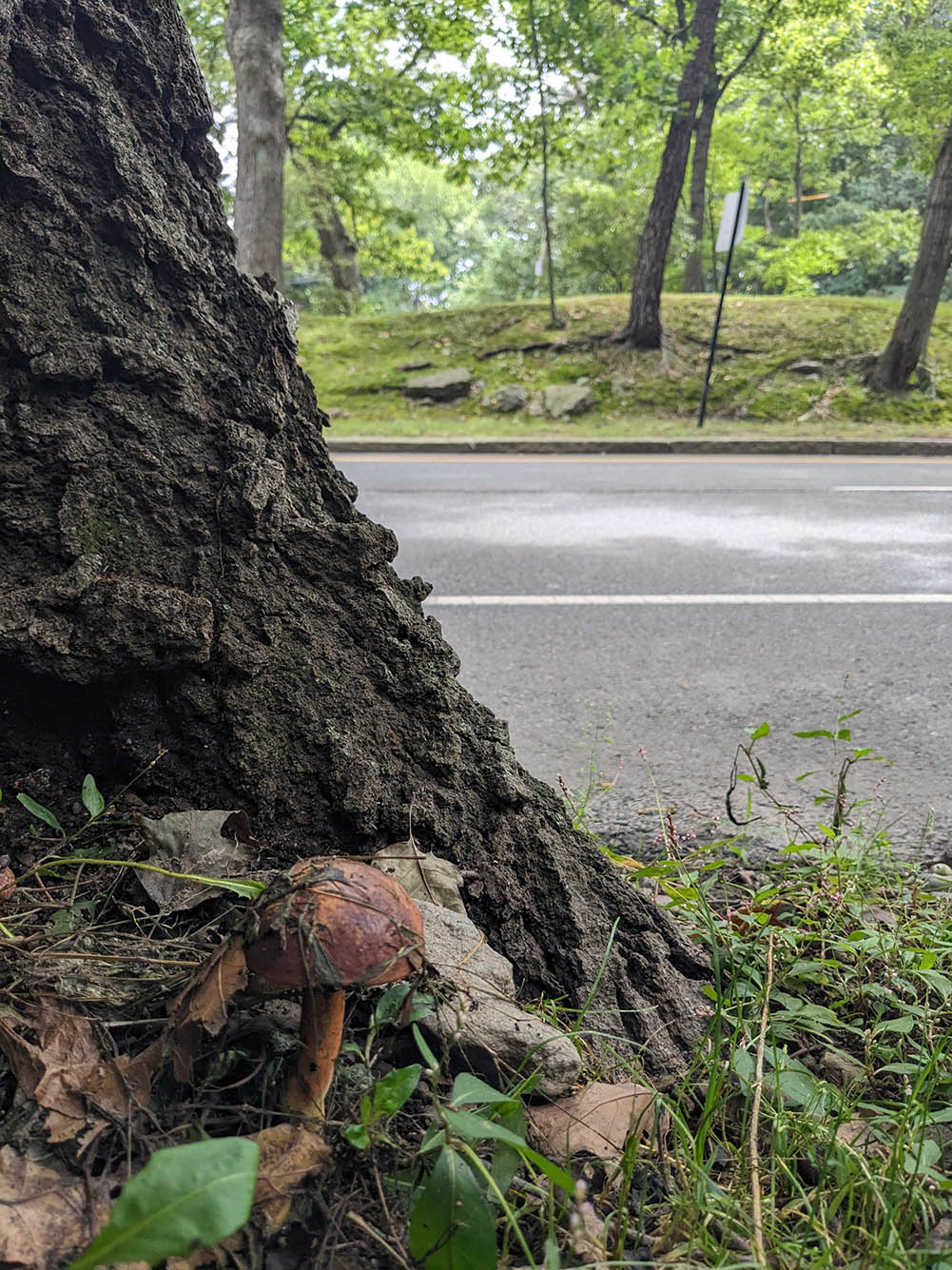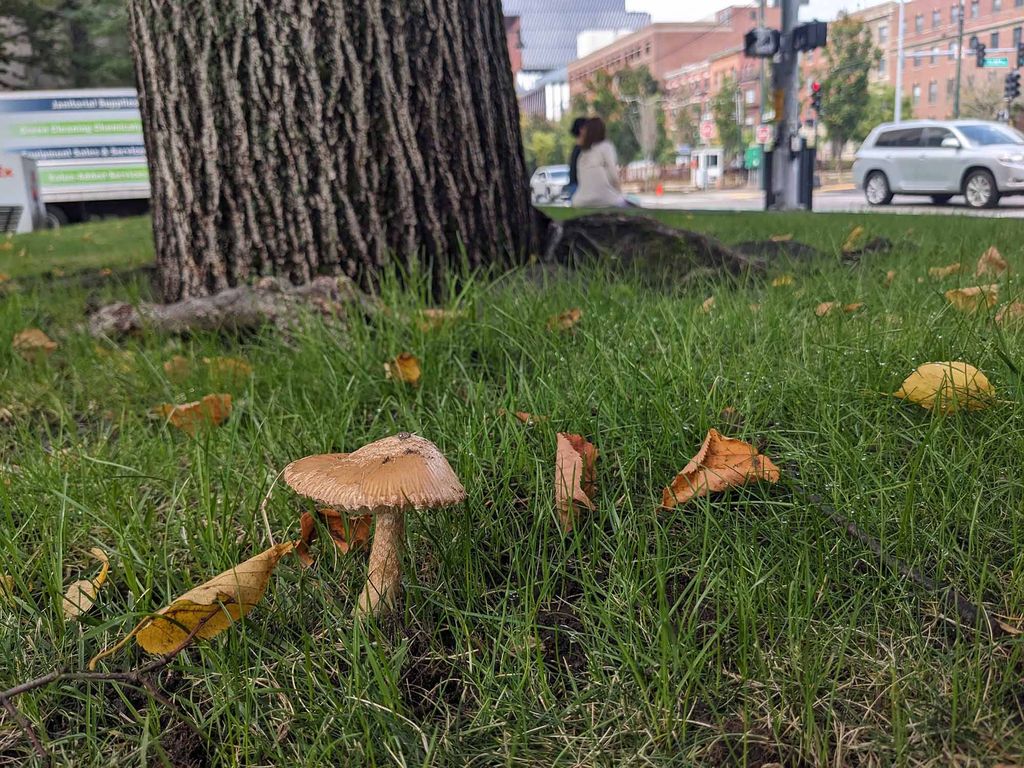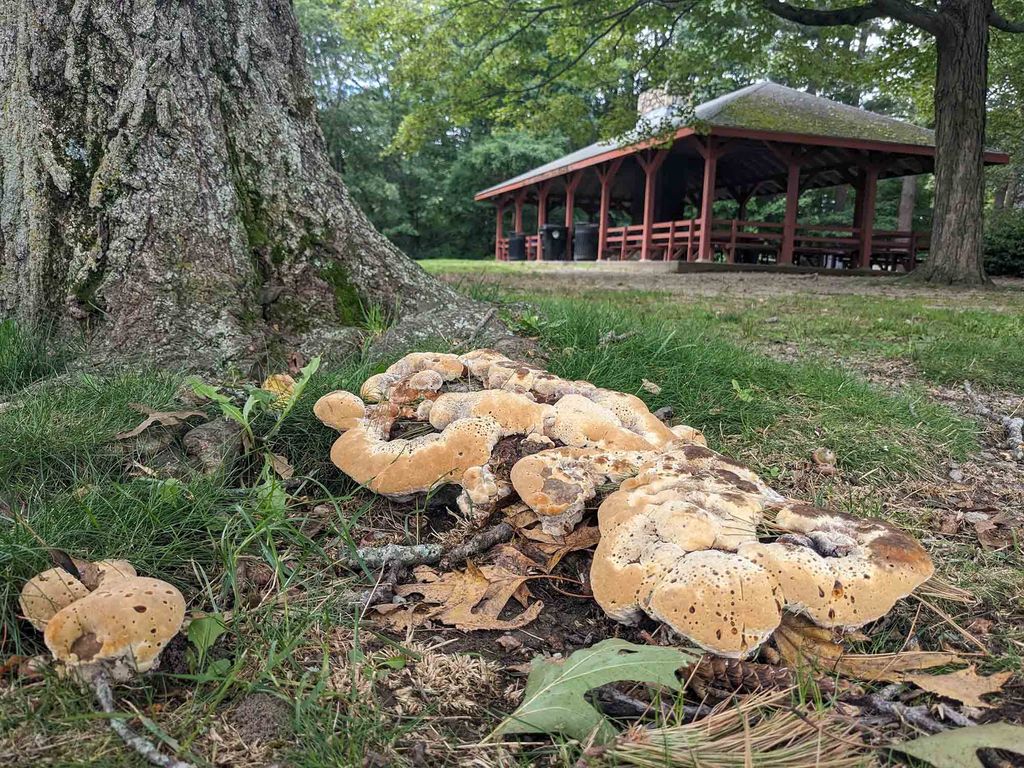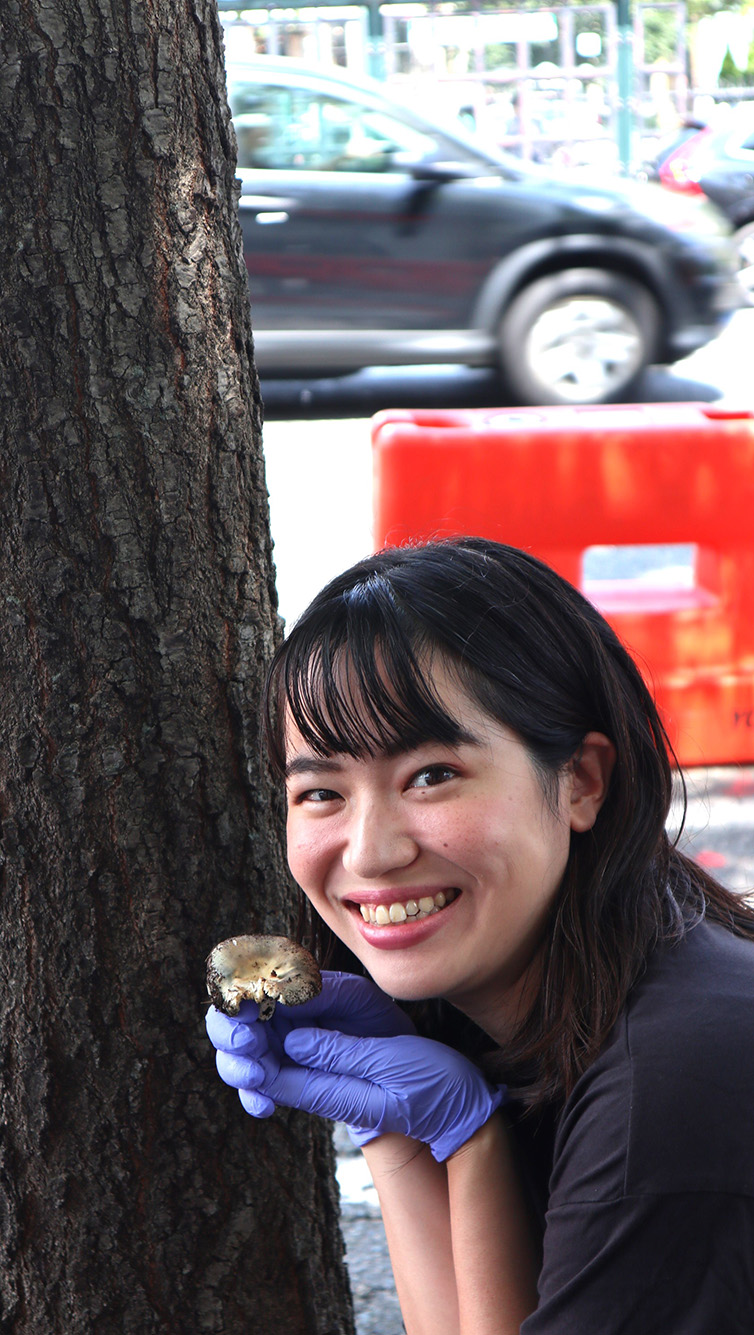Cutting Up Forests Disrupts an Essential Bond between Trees and Fungi
A breakdown between mycorrhizal fungi and trees can expose plants and animals to harmful pathogens, researchers warn

At forest edges like this one, fungi and tree roots are changing their relationship to one another, and researchers are trying to figure out why.
Cutting Up Forests Disrupts an Essential Bond between Trees and Fungi
A breakdown between mycorrhizal fungi and trees can expose plants and animals to harmful pathogens, BU researchers warn
Beneath some of the most iconic trees in New England, like towering oaks and pines, is an entire universe of soil microorganisms that work symbiotically with the tree roots. Soil microbes, particularly a type called mycorrhizal fungi, latch onto the roots to help protect the trees from harmful bacteria and fungi, and absorb nutrients, nitrogen, and water. In exchange, the tree gives carbon to the fungi.
This partnership helps keep entire forest ecosystems in balance. But since the underground world is largely invisible, it’s easy to forget that the things we do above ground—like chopping through forests to make space for roads, buildings, and agriculture—impact places that we can’t see.
Fragmenting forests and urbanization creates more forest edges, and researchers at Boston University have found that edge ecosystems operate differently than forest interiors. Now, a new paper in the Proceedings of the National Academy of Sciences describes how soil at forest edges is in greater disarray than previously thought, with the researchers warning that the more humans cut down intact forests, the more we may sever the foundational relationship between trees and the soil microbes that help keep them alive.


Forest edges and urban forests, like the two above, are altering the below-ground microbe community drastically. Even a walking path through a forest, say BU researchers, can disrupt microbial networks.
According to the paper, one of the greatest threats to temperate forests is edge creation through land clearing and development. The researchers sampled soil across eight sites in Massachusetts, each on a gradient from forest edge to interior, as well as urban to rural. They then extracted and analyzed soil DNA to see the microbes that are present. To their surprise, they saw that mycorrhizal fungi—specifically a type called ectomycorrhizal fungi, which are symbiotic with oak trees and other native species—are abundant in urban soil, but are not associating with trees as much. In forest edges, they found less ectomycorrhizal fungi in the soil overall.
“We found that urbanization and forest edge effects break down the mutualism between fungi and trees,” says Chikae Tatsumi, a BU College of Arts & Sciences postdoctoral researcher and lead author of the paper.

And that could be a problem when it comes to nature’s ability to absorb all the carbon we’re pumping into the atmosphere. If the fungi that are supposed to be absorbing carbon are inactive, it’s unclear whether urban forests are storing as much carbon as we think. The researchers also found higher amounts of pathogenic microbes at the forest edge, which can put plants and animals at risk of picking up diseases. Higher levels of bacteria that convert nitrates in soil were also present, meaning that there’s the potential for these microbes to release greenhouse gases like nitric oxide and nitrous oxide. With over 25 percent of landscapes in the Northeast United States covered by a forest edge, understanding these changes is vital for conservation and storing climate warming greenhouse gases.
“A lot of different things happen at the forest edge,” says soil microbiologist Jennifer Bhatnagar, a CAS associate professor of biology and senior author on the paper.
In general, forest edges tend to have higher temperatures and light levels, drier soil, and higher pH and nitrate levels, compared to forest interiors. According to Bhatnagar and Tatsumi, any one of these factors could lead to the microbial changes that they’re finding. It’s possible that urban and edge soils have so much excess nitrogen from human activities that the trees simply don’t need the fungi to absorb it.
“From our studies, it appears ectomycorrhiza is the very center of the microbial network in rural forests here, but they’ve lost their importance in the network in urban forests,” Tatsumi says. Her analysis also indicated that the forest edge has an unstable microbial composition, varying a lot every year, and that the composition in the forest interior is more stable. This is likely affected by highly fluctuating soil moisture levels at the forest edge.
Bhatnagar’s hypothesis is that although a road that cuts through a forest, or even a walking path, doesn’t seem like it would be that big of a deal, “that level of disturbance is so disruptive to the belowground community that it can basically switch from a beneficial community for plants and animals to a very negative one,” she says.
The BU team is now analyzing green areas in cities—like a row of trees along a road, a playground, a densely forested park—in order to figure out which spaces are most beneficial for absorbing greenhouse gases. Bhatnagar hopes that studies like these give landowners and public officials pause about where to develop land, and that if considering building a road through a forest, they instead look for another option.

Comments & Discussion
Boston University moderates comments to facilitate an informed, substantive, civil conversation. Abusive, profane, self-promotional, misleading, incoherent or off-topic comments will be rejected. Moderators are staffed during regular business hours (EST) and can only accept comments written in English. Statistics or facts must include a citation or a link to the citation.